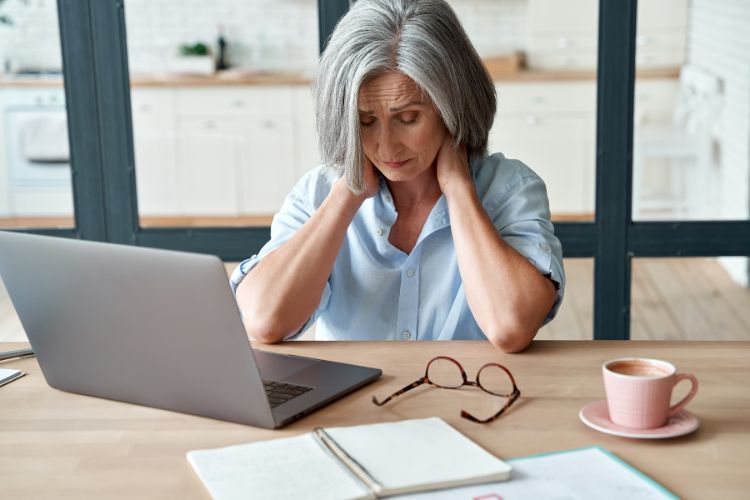It is estimated that over 1.5 billion people in the world are looking for ways to find relief from chronic pain. Pain is said to be among the most common reasons that Americans go on long-term disability from work, and impacts 1 in 3 Americans. The definition of chronic pain is that it is pain that lasts longer than the generalized recovery period of a given illness or condition.
One study indicated that pain that lasted over three months could be considered chronic pain, while pain that limits work or life for more than three months is called high-impact chronic pain. Another study found that two-thirds of its participants reported chronic pain symptoms one year later. There are many different causes and types of chronic pain and many ways of finding relief from chronic pain.
If you are looking for ways to find relief from chronic pain, use this guide to chronic pain right here.
Understanding Chronic Pain:
Chronic pain occurs when there is pain in the body for an extended period. Most definitions of chronic pain indicate that when the pain lasts for more than three months, it is considered to be chronic pain. It is also widely concurred that chronic pain is among the most expensive health problems in the United States. With medical costs, costs of lost wages, and legal costs as a result of chronic pain, this is an expensive condition.
Chronic pain can be caused by several different conditions, with lower back pain being listed as the most common health problem in America. Cancer and arthritis pain are both precursors to chronic pain. Headaches are another very common illness that is associated with chronic pain. At the same time, a wide number of neuralgias or neuropathic pain are cited as common causes of chronic pain.
This is a pain that lasts longer than an average headache or wound. At the same time, chronic pain isn’t necessarily pain that lasts every day of the condition. It can be intermittent, and appear on and off throughout an illness. This makes it very difficult for people who need to work to find ways to get back to work when they are suffering.
An important thing to note about chronic pain is that it is a common side effect of the aging process. It will be the result of an injury or illness, both of which are more common in later years. At the same time, this is not the only cause of common pain, and that only older people get pain this bad is a misconception that must be debunked. One study found that middle-aged adults reported more chronic pain than retirees, who were not working and did not succumb to work-related illnesses or injuries at the same rates as the middle-aged population.
Another misconception of chronic pain is that it is better to ride the pain out than have it treated. This is a misconception born of the opioid crisis, where opioids have become an addiction to many in the world who began taking them for pain relief. Today, many who have never had chronic pain take this medication for a synthetic high. Pain must be treated when it is a chronic pain, or the body will suffer.
The illness or injury that is causing the pain could worsen, and this places stress on the body making healing more prolonged. Another misconception is that you can’t move or exercise when you are in pain. For some people, this is true. However, movement and even slight activity can help to improve blood flow to the areas impacted by pain.
Many doctors will prescribe physical therapy for people who are in pain to do just that and to improve their range of motion and quality of life. Exercising and even light activity will improve your mood as well, which will help you when you are dealing with chronic pain. When doctors are wondering what chronic pain is in your life, you may recommend some activity to improve your blood flow and overall quality of life.

Causes and Types of Chronic Pain:
The two most common kinds of chronic pain are called chronic pain, and high-impact chronic pain. These are divided into types such as neuropathic pain, surgical pain, arthritis pain, back pain, and other kinds of pain like headaches or trauma pain from an accident or crisis. A high-impact chronic pain is the kind of pain that is most commonly reported in workplace accidents and injuries. However, pain like arthritis and back pain can also be considered high-impact pain.
Other kinds of chronic pain include pain that is associated with a disorder or illness. Neuropathic pain, for example, is subdivided into multiple different neurological conditions and disorders. This kind of pain is connected directly to nerve damage or nerve issues. When the nerves are damaged, they will not function properly and this releases pain signals to the brain, and to the area of the body where the pain is originating from.
Approximately one in 10 Americans will suffer from neuropathic pain at some point in their lives. This is caused by infection, accidents, brain disease or disorders, surgery, arthritis, and even carpal tunnel syndrome. Facial nerve pain is very common, but it is also found in syndromes like Parkinson’s disease and regional pain syndrome. Somatic pain is pain that is found in a body part, like your arms or legs.
It can also be found in your muscles. This is a sharp or throbbing pain like you would get if you injured yourself. A serious injury or one left untreated may result in chronic pain, and the situation could worsen. Other types of chronic pain include visceral pain, which is a pain that is connected to an internal organ.
This kind of chronic pain is associated with diseases like cancer or other major illnesses. It can also occur in the brain after a traumatic brain injury. You will see other symptoms like nausea and dizziness with visceral pain. That is because it affects an organ system that must respond to the pain problem and this causes additional symptoms.

5 ways to find relief from chronic pain
There are many ways to find relief from chronic pain. You can use medical treatments to treat chronic pain. There are also some natural methods that you can use to treat pain that goes on for extended periods.
These are the most common ways to find relief from chronic pain:
- Mind-Body Techniques
- Physical Activity
- Pain Medications
- Heat and Cold Therapy
- Counseling and support
Mind-Body Techniques:
Mind-body techniques are an important component of finding relief for chronic pain. These methods will help you in many ways. First, you can learn how to relax your body by relaxing your mind. This helps with pain relief. That is because when your body is in pain, it tends to tense up and tighten.
With chronic pain, that tension will appear everywhere in the body. This is going to exacerbate your pain. Mindfulness and meditation help you to focus on something other than the pain – you. With meditation, you can escape into a different world where you only focus on yourself. This promotes relaxation and helps to reduce overall stress and the stress of pain.
You can also practice deep breathing exercises that will help you to become more mindful. These are exercises where you breathe in, and out, over and over again until you find stress release. Light candles, put on essential oils, play your favorite music, and breathe in, and breathe out. You will soon see the benefits of this pain relief method with practice and time, and you will enjoy it.
Physical Activity:
Physical activity is an excellent source of pain relief for chronic pain, or any kind of pain. That is because when you exercise, your brain releases the natural pain reliever of endorphins. This will help you find pain relief within about one hour of exercising. You will also become more hungry, which can help you to eat better when you are in chronic pain.
Pain is a natural appetite suppressant. When you exercise you contribute to your overall wellness in several ways, and improving your hunger will help you to feel better. Start with low-impact exercises that can help you to get back on your feet again, slowly but surely. Swimming, yoga, walking, and even light movements in a chair, from your bed, or on a couch can help.
You may also want to talk to your doctor about starting physical therapy. This will provide a more structured physical activity program that can help you with pain. These exercises will target the areas of your body that are causing the pain. Then you can slowly walk back from your pain journey into a place of more thorough healing.
Pain Medications:
There are many different pain medications available for chronic pain. You will want to talk to your doctor about the best program for you. You may want to start with over-the-counter analgesics and pain medication such as acetaminophen or ibuprofen. If those do not work, consider talking to your doctor about something stronger for neuropathic-specific pain, or opioids for chronic pain relief.
Heat and Cold Therapy:
Hot and cold therapy are wonderful tools that can help you find immediate relief from chronic pain. Heat packs will help to relax your muscles and the surrounding areas and promote overall healing. You can ease stiffness and feel better by applying heat packs that will bring the blood flowing back to your injured or painful areas.
A cold compress will do the same thing but provides the additional benefit of inflammation help. These will also numb the area temporarily, and help to provide relief from specific kinds of pain, like muscle aches or pains, injuries, and fever.
Counseling and Support:
When you have exhausted other means of pain relief, you may find that you are mentally drained from coping with pain and its treatment. Counseling and emotional support can benefit you tremendously. Cognitive behavioral therapy is particularly useful for pain induced by trauma. This can help you to think about your pain differently and find a lifelong coping mechanism.
Support groups with people who are going through the same thing will also help you tremendously. Find some in your area, at your local hospital, or with your local church or spiritual organization, and you can find people who are going through the same things. You may even make new friends on this journey. That can help you considerably when you are dealing with chronic pain.
Find Relief from Chronic Pain Today
Chronic pain is a kind of pain that lasts for longer than normal after an injury or illness. It is considered chronic when it lasts for longer than three months as well. Chronic pain is treated through a wide range of treatments, including medical treatments and natural remedies. When your pain is unbearable, consult with a doctor to review your options. You don’t have to live in pain. Find relief from chronic pain today.
